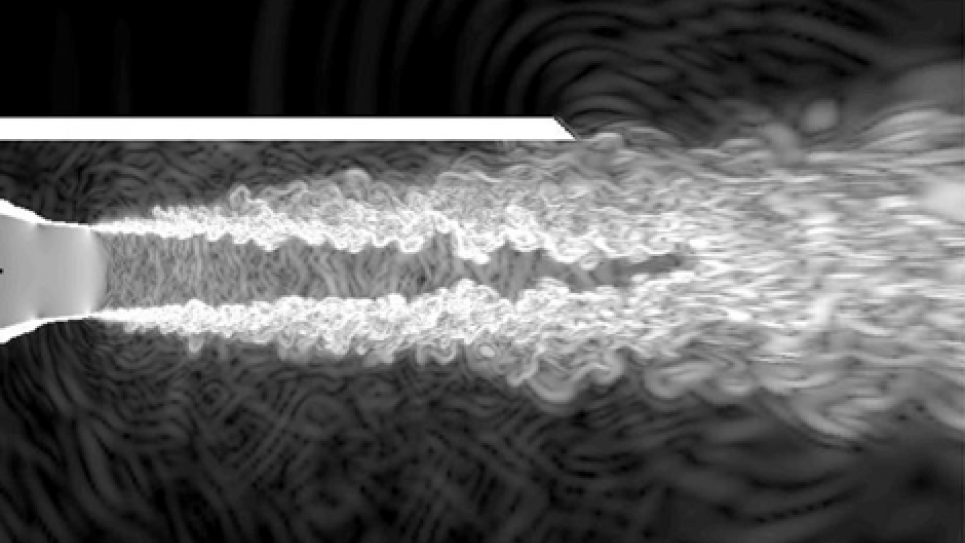
Delivering “Green” Jet Engines and Wind Turbines
A GE Global Research team is studying the complex flow of air in jet exhaust nozzles and wind turbine airfoils. The researchers are conducting simulations on the Argonne Leadership Computing Facility’s supercomputer to understand and predict flow in jet engines and wind turbines. Such information is key to developing quieter, more fuel-efficient wind turbines and jet engines and to improving engine life cycles in an extremely competitive global market.
GE Global Research’s (GE’s) recent work on large eddy simulations (LES) has leveraged the petascale computing enabled by the INCITE program to break barriers related to the aero-acoustics of wind turbine and aircraft engines. The GE LES strategy has been to accelerate its industrial impact by pushing application/validation to realistic conditions, addressing fundamental physics and source characterization challenges, and extending capability to handle complex system interactions. Powered by scalability improvements at the Argonne Leadership Computing Facility, the previous INCITE work has demonstrated how this first-principles-based LES capability can transform product development. This includes proof-of-concept for airfoil and jet noise computation at realistic Reynolds numbers, design guidance for novel jet noise reduction features, and turnaround capability to replace a physical design/test campaign.
For jet engines, current research includes examining the experimentally hard-to-quantify effect of jet-flap interaction to characterize installation effects on jet noise, and aid in developing low-noise exhaust systems. Simulations are under way to understand the noise generation and radiation in the presence of installation geometry, such as pylon and wing. This will demonstrate how the validated LES solver, coupled with high-performance computing, can be used as a numerical rig to gather high-resolution flow and acoustic data to better understand, effect of nozzle geometry variations on noise. Driven by a recent push into ultra-high, bypass-ratio-ratios engines for increased propulsive efficiency, fundamental work in fan broadband noise has also been initiated.
For wind turbines, GE is working towards demonstrating readiness in guiding low-noise design, validating the complex scaling of turbulent self-noise, and using wall-models to enable large-span blade computations. Simulations are in progress to assess the effect of angle of attack on airfoil trailing edge noise, an important step towards enabling improved trailing edge designs for noise reduction. The research team’s goal is to improve the design process for both individual turbines and large turbine farms.